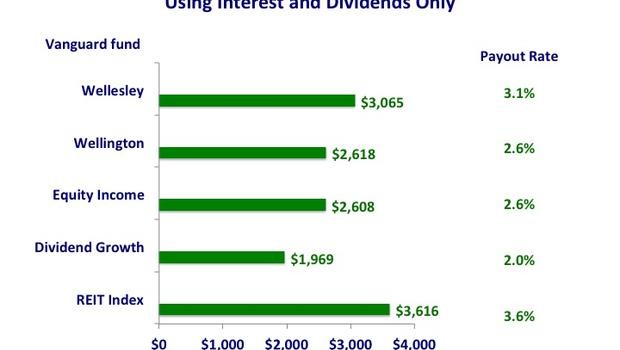The best investments for generating retirement income CBS News
Post on: 19 Июль, 2015 No Comment

(MoneyWatch) Suppose you’ve done a good job investing and accumulating money in your IRA and 401(k) plan, and now you’re trying to decide how to best invest those assets to generate retirement income. Which investments might work best for you at this stage of the game?
While the answer isn’t the same for everyone, the decisions you have to make regarding asset allocation for those investments are. Each of us needs to determine the appropriate mix of investments (such as stocks, bonds, annuities and real estate) for our own situation, and we also need to choose specific investment products and services.
Welcome to Week 10 of my series 16 Weeks to Plan Your Retirement . It’s time to discuss the considerations you’ll need to take into account when choosing investment vehicles for your retirement savings. You’ll also need to decide which of the retirement income generators (RIGs) I discussed in my previous post you’ll want to use to generate retirement income. If you haven’t read that post yet, you may want to review it first to more easily understand this post. Ready? Then let’s get started.
RIG No. 1: Invest your retirement savings, and use just the interest and dividends to generate retirement income.
For this purpose, I like using low-cost, no-load, broad-based mutual funds balanced between stocks and bonds. When you’re searching, look for a fund that adopts the strategies advocated by CBS MoneyWatch bloggers Allan Roth and Larry Swedroe. Keep the fees low (under 50 basis points and the lower, the better), and periodically rebalance the asset allocation between stocks and bonds to stay within prescribed targets, which enforces discipline to buy low and sell high.
Consider funds that invest at least one-third but no more than two-thirds in stocks, with the remainder invested in bonds. This type of allocation gives you the potential for growth to keep up with inflation, with protection against stock market declines. In today’s market, these types of investments will generate investment earnings of about 2 percent to 3 percent per year, depending on the specific asset allocation you’ve selected, with potential for future growth in both principal and dividend amounts. A few good funds that invest along these lines are the Vanguard Wellesley Fund (VWIAX ), the Vanguard Balanced Fund (VBIAX ), and the Vanguard Wellington Fund (VWELX ).
Target date funds that have reached their target retirement year may also fit the above goals. And a reasonable alternative for some of your investments might be mutual fund REITs (real estate investment trusts), since this type of investment can also give you income with the potential for growth.
If you’d followed such a strategy for the first 12 years of this century, which included two stock market crashes, you would have ended with more money than you started with, and you would have enjoyed a steady flow of investment earnings that had only mild fluctuations. You would have survived one of the worst periods for investing!
If you want to live on your investment earnings, I’d avoid using CDs or cash equivalents — interest rates are just too low right now to offer much income. And even if interest rates rise in the future, I’d be very concerned about a future repeat of the past few years.
On the other hand, I wouldn’t seek the highest-yielding stocks or bonds either, as these assets often have underlying risks and the high yields can evaporate.
You can use Morningsta r to help you evaluate and shop for the types of mutual funds mentioned here.
The advantage of this investing strategy combined with this RIG is that you keep your principal intact, and you don’t need to sell investments to generate retirement income. You don’t need to panic and sell when the market drops. The disadvantage is that this method usually generates the lowest amount of retirement income.

RIG No. 2: Use systematic withdrawals in which you invest your retirement savings and withdraw principal cautiously.
If this is the method you’ve decided to select for generating retirement income, then the same kinds of investments I mentioned above work well here, too — with a caveat. Here’s one scenario you want to avoid: exhausting your savings because you invested well above 50 percent of your assets in stocks, withdrew too aggressively (well over 4 percent of your account balances), and experienced a stock market decline in the first 10 years of your retirement.
To protect against this possibility, either invest conservatively (with under 50 percent of your assets in stocks) or withdraw conservatively (take out just 3.5 percent or less of your savings each year or both. Frankly, I’d rather see you hold back on withdrawals in your early years of retirement and only increase your withdrawals if you experience positive returns for 10 years or more to make sure you don’t outlive your money. T. Rowe Price has a good online calculator to help estimate failure rates of different combinations of asset allocations and withdrawal rates. You should use it to help you figure out an asset allocation and withdrawal plan that works best for you.
Be sure not to overlook your 401(k) plan at work for investments that can generate income in retirement. It’s possible your plan offers funds similar to the ones I’ve described in this post with lower fees than you can get as a retail customer with a financial institution.
Stay tuned for my next post, which discusses the best ways to buy an annuity.
2013 CBS Interactive Inc. All Rights Reserved.














